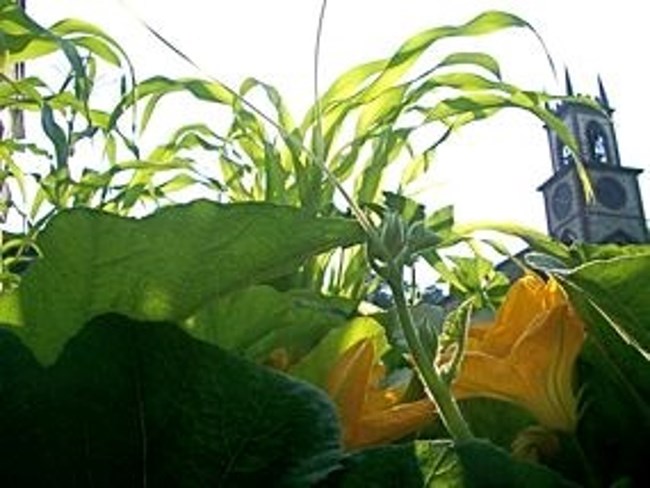Thanksgiving And Native American Heritage Month
BY PATTI MC ALPINE

As we prepare to celebrate Thanksgiving sequestered with our immediate household members, we may still wish to carry on certain traditions such as the Thanksgiving meal of turkey, stuffing and cranberry sauce, squash and of course, the green bean casserole.
You may think you are celebrating as the pilgrims did. However, there may have been squash and beans at that table, but you wouldn’t find cranberry sauce (no sugar available) or green beans in a casserole. Most likely in addition to fowl there may have been fish and clams at the “First Thanksgiving.”:
There are a few other myths that we have uncovered and would like to share and since November is also Native American Heritage Month, we would like to honor the indigenous peoples that once inhabited this land.
Some of you may be wondering what this has to do with the Blackstone Valley other than our leader, Dr. Robert Billington, is a Mayflower descendant. This year is the 400th anniversary of the landing of the Mayflower.
However, the area in which the Blackstone River Valley sits was once part of the Plymouth Colony and earlier than that was part of territory occupied by the Wampanoag or Wopanaak, “People of the Light’ (see map). The Wampanoag territory actually extended as far as Grafton, Massachusetts on the Massachusetts side of the Blackstone River Valley National Heritage Corridor.
In November 1621 the “pilgrims” were celebrating the first successful harvest with the 53 remaining from the voyage to the new world. However, this harvest may not have been successful if not for the help of Tisquantum, aka Squanto. He lived among the English settlers (they never called themselves pilgrims) in Plymouth, which originally was his village of Patuxet.
He taught them how to plant corn, beans and squash in what is known as the “three sisters garden.” There are two examples you may visit one is at Slater Mill Campus and the other at Roger Williams National Memorial.
Squanto also brokered the peace agreement and military alliance between the tribe’s Sachem Massasoit and Governor John Carver. Massasoit came from an area known as Pokanoket, the original name of the tribe meaning “people of the land,” at the mouth of the Narragansett Bay possibly somewhere between Bristol and East Providence, RI.
What we know of the “First Thanksgiving” came from a letter written by Edward Winslow describing the successful harvest and mentions that some of the men had gone out fowling (hunting wildfowl like geese, swans and possibly wild turkey).
The Wampanoag no doubt heard the gunfire and informed Massasoit who then arrived with 90 men fearing a battle. Learning that the English were celebrating, Massasoit sent out men to hunt deer for meat to contribute to the feast. The men came back with five deer.
So unlike what we know that the “pilgrims invited the native people, instead it was more like Massasoit and his men (outnumbering the English) crashed the party, but hey they brought meat (venison). Also the gathering lasted three days with Native Americans setting up camp while they feasted.
Not once did the English refer to this as Thanksgiving. English custom refers to periods of fasting during bad times, possibly similar to what we have been experiencing, and periods of thanksgiving, a somber religious celebration in prayers when things are good (so perhaps postponing Thanksgiving gatherings until after the vaccines are available may not be such a bad idea).
Many early recorded “thanksgivings” came after battles including Governor Bradford declaring thanksgiving after defeating the Connecticut Pequots, the end of the King Philip’s War and the Battle of Saratoga in 1777.
Thanksgiving as we now celebrate on the fourth Thursday was first declared by President Abraham Lincoln in 1863, using Winslow’s account of the 1621 harvest celebration of the “pilgrims” and Native people gathering together as a comforting factor during a time of division.
We know that prior to colonial settlement and industrialization of the Blackstone Valley the Native Americans, Wampanoag, Nipmuck, or Narragansett called the Blackstone River “Kittacuck” and Algonquin term meaning great tidal river and was used for fishing, plentiful with salmon and lamprey.
When William Blackstone arrived in 1635 to Cumberland, the area was still part of Plymouth Colony and Blackstone counted Massasoit as one of his friends.
Wampanoag, Nipmuck and Narragansett are still members of the Blackstone Valley Community today and when you sit down at your table perhaps take a moment to thank the people for the land we share and acknowledge their place at the table.
Resources:
National Geographic 1621 New Look at Thanksgiving
Roger Williams National Memorial
Caleb Johnson’s MayflowerHistory.com
Written by: Patti McAlpine
Photo Courtesy Roger Williams National Memorial
